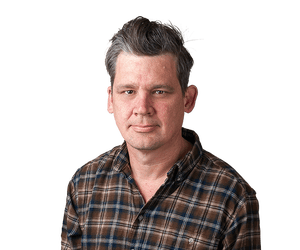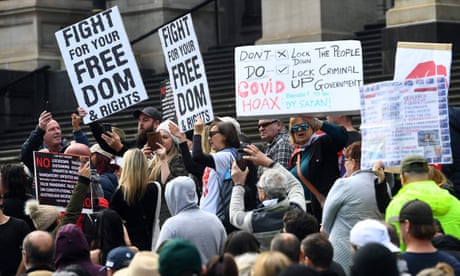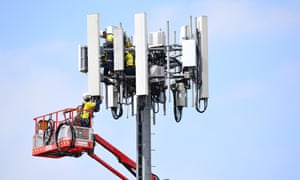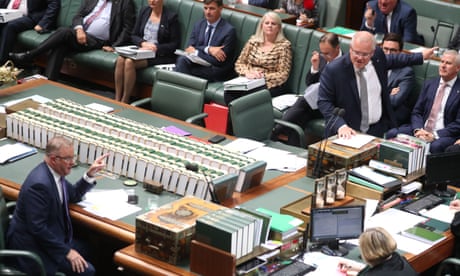
Sacred Arts of Orisha Traditions
Special Collections Gallery
July 5, 2017
September 30, 2017
Orisha religions are a world-wide network of spiritual traditions originating among the Yoruba people of Nigeria and spread across the Americas by enslaved Yoruba men and women in the nineteenth century. Orishas themselves are spiritual powers associated with royal lineages, forces of nature, and, often, the saints of popular Catholicism.
Sacred Arts of Orisha Traditions features objects collected over nearly forty years by Joseph M. Murphy, the Paul and Chandler Tagliabue Distinguished Professor of Interfaith Studies and Dialogue. For devotees of Orisha religions, these items represent and invoke sacred powers as emblems of particular Orishas. They illustrate the religious pluralism which is a distinctive and creative feature of many Orisha religions.
The creativity revealed by these objects reflects the diversity of the Catholic experience and its embrace of dialogue among religious traditions.
Guest Curator: Joseph M. Murphy, the Paul and Chandler Tagliabue Distinguished Professor of Interfaith Studies and Dialogue
Liason from the Booth Family Center for Special Collections: Christen E. Runge, Assistant Curator, Art Collection
With assistance from Special Collections Intern Charles T. Cooper (C
Acknowledgments:
Guest Curator: Joseph M. Murphy, the Paul and Chandler Tagliabue Distinguished Professor of Interfaith Studies and Dialogue
Liason from the Booth Family Center for Special Collections: Christen E. Runge, Assistant Curator, Art Collection
With assistance from Special Collections Intern Charles T. Cooper (C
SELECTIONS FROM THE ONLINE EXHIBITION
Ochún Mazo
Initiation necklace for the oricha Ochun
Martin Tsang
Glass and plastic beads
Miami, FL, USA, 2017
L.2017.2.9
These magnificent necklaces are worn by new devotees during their
initiation. This one marks the wearer as a devotee of Ochún Ololodi, the
diviner Ochún. When not worn the mazo necklaces decorate home
altars.
Martin Tsang
Glass and plastic beads
Miami, FL, USA, 2017
L.2017.2.9
These magnificent necklaces are worn by new devotees during their
initiation. This one marks the wearer as a devotee of Ochún Ololodi, the
diviner Ochún. When not worn the mazo necklaces decorate home
altars.
Kélé Todos Orixás
Necklace for all the orixás
Glass beads
Rio de Janeiro, Brasil, 1991
L.2017.2.14
This necklace is a composite of symbols for fifteen orixás. Each is
indicated by color and pattern.
Glass beads
Rio de Janeiro, Brasil, 1991
L.2017.2.14
This necklace is a composite of symbols for fifteen orixás. Each is
indicated by color and pattern.
Ferramentas de Oxum [set of 4]
Set of tools for the orixá Oxúm
Afroarte Indústria
Brass and copper
Rio de Janeiro, Brasil, 1991
L.2017.2.1
These items form part of the regalia for the orixá Oxúm. They are worn
or carried by new initiates when they are first presented to the
community and when they incorporate the orixás in ritual dance.
Afroarte Indústria
Brass and copper
Rio de Janeiro, Brasil, 1991
L.2017.2.1
These items form part of the regalia for the orixá Oxúm. They are worn
or carried by new initiates when they are first presented to the
community and when they incorporate the orixás in ritual dance.
Adé Ochún with Tinaja
Altar crown for the oricha Ochún
Juan Gonzales (crown)
Brass crown with ceramic vessel
Miami, FL, USA, ca. 2000
L.2017.2.4
These crowns are placed atop vessels that hold the fundamental symbols
of the orishas, often stones and shells. This crown shows the color and
number of Ochún. The finial is her avatar, the Virgin of Charity.
Juan Gonzales (crown)
Brass crown with ceramic vessel
Miami, FL, USA, ca. 2000
L.2017.2.4
These crowns are placed atop vessels that hold the fundamental symbols
of the orishas, often stones and shells. This crown shows the color and
number of Ochún. The finial is her avatar, the Virgin of Charity.
Altar for Ochún
Altar for Ochún featuring statue of the Virgin of Charity. Vessels,
yellow flowers, honey, and beaded necklaces reference
Ochún. All is brilliant, golden, rich, and fecund.
Washington, DC, 2010
Photograph by Joseph M. Murphy
yellow flowers, honey, and beaded necklaces reference
Ochún. All is brilliant, golden, rich, and fecund.
Washington, DC, 2010
Photograph by Joseph M. Murphy
Adé Oya with Tinaja
Crown for the orisha Oya, mounted on blue vase
Antonio Salas (crown)
Copper crown with ceramic vessel
Miami, FL, USA, 2002
L.2017.2.35
Antonio Salas (crown)
Copper crown with ceramic vessel
Miami, FL, USA, 2002
L.2017.2.35
As many of the orishas are royal figures their fundamental symbols – held
in porcelain vessels – are crowned with royal emblems. Here the orisha
Oyá is symbolized by red‐metal copper, nine tines, and nine miniature
“tools” showing her mastery of lightning, death, and the cemetery.
Adé Iemanjá Asésú
Initiation crown for the oricha Yemayá Asésú
Painted cardboard with applied fabric trims, plastic beads,
and shells
Miami, FL, USA, 2017
L.2017.2.29
This crown would be worn by new initiates into the devotion of Yemayá.
On the middle day of the initiation period, the new initiate is presented
to the community in the finery of his or her patron orisha.
Painted cardboard with applied fabric trims, plastic beads,
and shells
Miami, FL, USA, 2017
L.2017.2.29
This crown would be worn by new initiates into the devotion of Yemayá.
On the middle day of the initiation period, the new initiate is presented
to the community in the finery of his or her patron orisha.
Garabato Eleggua
Hook for the oricha Eleggua
Glass beads, cowrie shells, wire, wood
Miami, FL, USA, ca. 2000
L.2017.2.2
The garabato is a stylized hook used by Eleggua to clear paths of
vegetation. In dance Eleggua will brandish the garabato and sometimes
use it to trip unsuspecting onlookers.
Glass beads, cowrie shells, wire, wood
Miami, FL, USA, ca. 2000
L.2017.2.2
The garabato is a stylized hook used by Eleggua to clear paths of
vegetation. In dance Eleggua will brandish the garabato and sometimes
use it to trip unsuspecting onlookers.
Oché Changó
Axe for the oricha Changó
Alberto Druyat
Acrylic paint on wood
Matanzas, Cuba, ca. 2005
L.2017.2.33
The double‐headed axe is the preeminent symbol of Changó the orisha of
royalty, thunder, and lightning. This bright piece would adorn one of
Changó’s elegant altars and might be taken up by one of his mediums
and carried like a powerful wand in ceremonial dance.
Alberto Druyat
Acrylic paint on wood
Matanzas, Cuba, ca. 2005
L.2017.2.33
The double‐headed axe is the preeminent symbol of Changó the orisha of
royalty, thunder, and lightning. This bright piece would adorn one of
Changó’s elegant altars and might be taken up by one of his mediums
and carried like a powerful wand in ceremonial dance.
Oxé Xangó
Copper double‐headed axe for the orixá Xangó
Copper
Salvador da Bahia, Brasil, 1991
L.2017.2.34
In Brazil as in Cuba the double‐headed axe is the premier symbol of the
orisha of royalty, thunder, and lightning. As a “red metal” this copper
oxé highlights Xangó’s embodiment of fire and hot energy.
Copper
Salvador da Bahia, Brasil, 1991
L.2017.2.34
In Brazil as in Cuba the double‐headed axe is the premier symbol of the
orisha of royalty, thunder, and lightning. As a “red metal” this copper
oxé highlights Xangó’s embodiment of fire and hot energy.



















